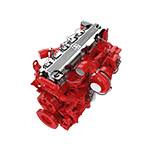nóv . 30, 2024 21:00 Back to list
Understanding the Differences Between Brake Drums and Brake Pads for Your Vehicle
Brake Drums vs. Brake Pads Understanding the Key Differences
When it comes to vehicle braking systems, two primary components are the unsung heroes brake drums and brake pads. Though they serve the same essential purpose of slowing down or stopping a vehicle, their designs, functions, and operational mechanisms differ significantly. To appreciate these differences fully, it is crucial to delve into the world of brake systems and understand how they contribute to vehicle safety and performance.
Brake Drums The Basics
Brake drums are components of a drum brake system, which is one of the oldest forms of braking technology still in use today. A brake drum is typically a cylindrical metal component that rotates along with the wheel. Inside the drum, you’ll find brake shoes, which are curved pieces of friction material. When the driver presses the brake pedal, hydraulic pressure forces these shoes against the interior surface of the drum, generating friction that slows down the vehicle.
One of the key advantages of drum brakes is their ability to provide powerful braking force. This is particularly useful for heavier vehicles, such as trucks or buses, where enhanced stopping power is necessary. Drum brakes also tend to perform better in wet conditions due to their enclosed design, which reduces exposure to moisture, dirt, and debris.
However, brake drums have their drawbacks. They are generally heavier than disk brakes, which can add unnecessary weight to the vehicle. Additionally, they are more prone to fading – a phenomenon where brakes lose effectiveness due to overheating. This can occur during prolonged braking, like when descending a steep hill. Moreover, maintenance can be more cumbersome, as accessing the brake shoes inside the drum often requires removing the entire wheel.
Brake Pads An Overview
In contrast, brake pads are components of disc brake systems, which have become the standard for modern vehicles. A disc brake setup includes a brake rotor (the disc), calipers, and, of course, the brake pads. When the brake pedal is engaged, hydraulic pressure pushes the calipers to squeeze the brake pads against the rotor, creating friction that slows down the wheel.
brake drums vs pads

One of the significant advantages of disc brake systems is their superior cooling capabilities. The exposed design allows air to circulate and dissipate heat more effectively than a drum system, reducing the risk of brake fade. Additionally, disc brakes provide more consistent performance under various conditions, making them the preferred choice for most passenger vehicles today.
Brake pads also have advantages when it comes to maintenance. Replacing brake pads is generally a more straightforward process than working with drum brakes. Plus, many vehicles provide wear indicators that alert drivers when it's time to replace pads, enhancing overall safety.
However, brake pads come with certain disadvantages as well. For instance, they tend to wear out faster than brake shoes in drum systems, which can mean more frequent replacements. Additionally, brake pads can produce a significant amount of dust and noise, particularly when they are nearing their lifespan or if they are of lower quality.
The Right Choice for Your Vehicle
Choosing between brake drums and brake pads ultimately depends on the specific needs and characteristics of your vehicle. For heavier vehicles or those that may face extreme braking conditions, such as towing or mountainous driving, drum brakes may be a better choice due to their enhanced stopping power and performance in wet conditions.
Conversely, for everyday passenger vehicles, modern disc brake systems with brake pads likely offer a more reliable and efficient solution. Their shorter maintenance cycle and superior heat management often outweigh the benefits of traditional drum brakes in typical driving scenarios.
Conclusion
Understanding the distinctions between brake drums and brake pads can help vehicle owners make informed decisions regarding maintenance, repairs, and upgrades. Both components play critical roles in ensuring vehicle safety, but selecting the right system for your individual needs is paramount. Regular inspection and maintenance of your vehicle's braking system, regardless of the type, are essential for optimal performance and safety on the road. Whether you have drum brakes or disc brakes, keeping your braking system in top condition is key to ensuring a safe and smooth driving experience.
-
[Product ]-[Company Name]|[Core Function 1]&[Core Function 2]
NewsJul.22,2025
-
HINO Advanced Machinery Solutions - LONGYAO COUNTY YIHANG MACHINERY | Industrial Efficiency&Customization
NewsJul.21,2025
-
HINO Machinery Solutions - LONGYAO COUNTY YIHANG MACHINERY MANUFACTURING CO.LTD | Precision Engineering, Customizable Configurations
NewsJul.21,2025
-
HINO Machinery Solutions - LONGYAO COUNTY YIHANG MACHINERY MANUFACTURING CO.LTD | Precision Engineering, Customizable Configurations
NewsJul.21,2025
-
HINO Machinery Solutions - LONGYAO COUNTY YIHANG MACHINERY MANUFACTURING CO.LTD | Precision Engineering, Customizable Configurations
NewsJul.21,2025
-
HINO Industrial Solutions|Precision Engineering&Energy Efficiency
NewsJul.21,2025
